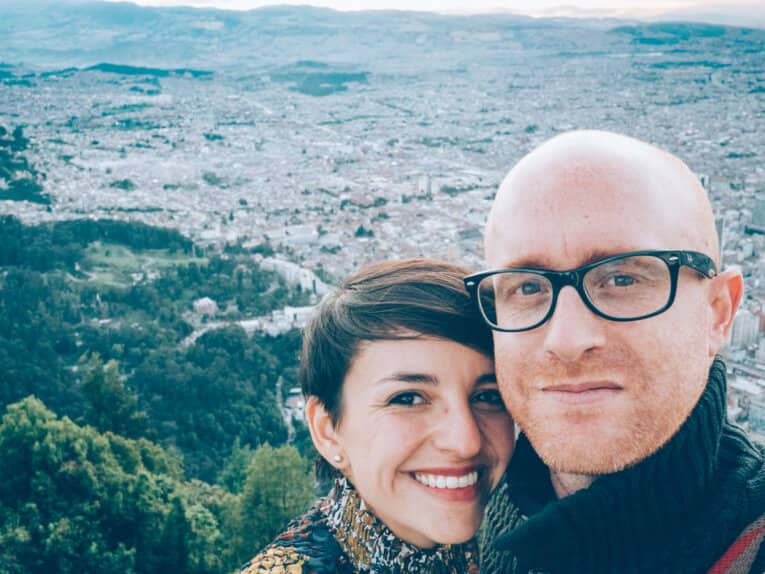In this post, you’ll find all the practical information you need to visit Tayrona Park: entrance fees, opening times, closing dates, accommodation tips, park map, descriptions of the different sectors and beaches, etc.
If there’s one destination that’s on everyone’s mind when planning a trip to Colombia, it’s surely Cartagena tayrona Park! In fact, if you ask Colombians what they absolutely must visit in their country, 99% will tell you: “el parque Tayrona”. It’s one of Colombia’s pride and joys.
TAYRONA PARK CLOSING DATES
Every year, the park closes at the request of the indigenous people of the Sierra Nevada de Santa Marta, to allow them to carry out their rituals in this sacred territory and let nature breathe.
February 1 to 15
Time of Kugkui Shikasa: when the earth renews itself
June 1 to 15
Saka Jusi period: the “rules” of the earth
October 19 to November 2
Nubbatashi period: animals perform rituals for the earth
Contents
Related posts

Travel Poster “La Sierra”
Buy our beautiful prints to get a taste of Colombia at home
Disclaimer: we apologize in advance for any grammatical or syntactic errors, as our native language is not English (we're a Colombian-French couple), so we hope you'll forgive us and still enjoy the information we share with you! Please note that all the information on our blog is based on our own experience, and is checked and updated regularly.
Tayrona National Park
A bit of history
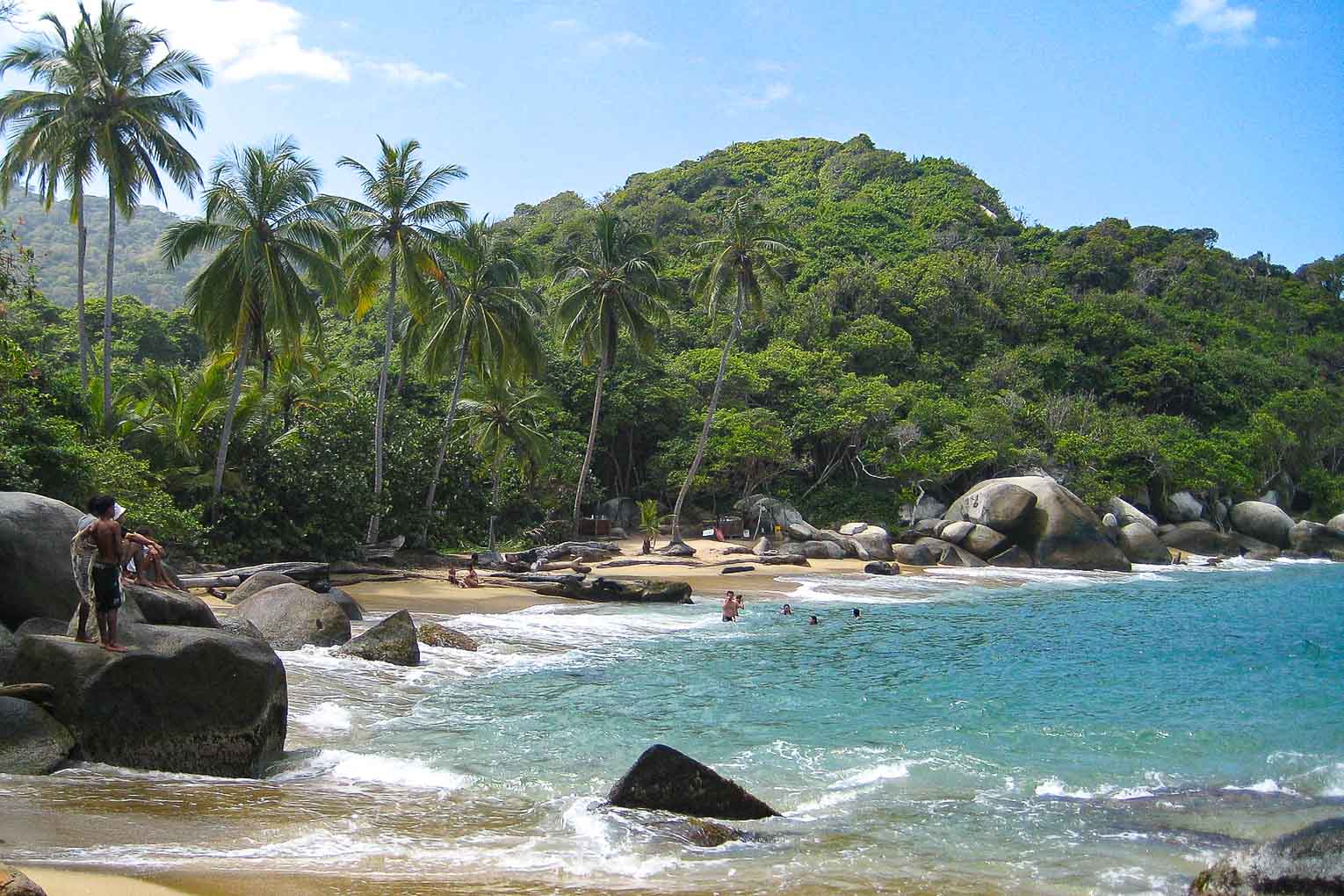
Before Spanish colonization, the region was inhabited by the Taironas tribes, who left traces of their civilization such as the famous Ciudad Perdida, but also Pueblito Chairama inside today’s Tayrona National Park. It is estimated that they were decimated by the arrival of the colonists, until their extinction in the 17th century.
The indigenous peoples of the Sierra Nevada de Santa Marta
Today, the indigenous peoples living in the Sierra Nevada de Santa Marta region are considered to be the direct descendants of the Tairona people. These four peoples still live in the mountains overlooking Tayrona Park: the Kogis, the Kankuamos, the Wiwas and the Arhuacos.
The park includes numerous sanctuaries, ancient cemeteries and ritual sites where indigenous communities continue to gather regularly for ceremonies. The natives consider the Tayrona Park to be their own territory, which is why they have been fighting for many years to recover parts of their territory, or at the very least to ensure that the sacred sites are respected and off-limits to tourists.
OUR EXPERIENCE IN TAYRONA PARK
Read about Sam’s different experiences in Tayrona Park, including the discovery of Cabo San Juan, a day at Playa Cristal, scuba-diving outings..
Natural reserve
Tayrona Park was established as a protected national nature park in the late 1960s . The park covers almost 20.000 hectares of land and sea. Here you can enjoy landscapes of beaches, coral reefs, cliffs, mangroves, swamps and tropical rainforest. There are hundreds of species of flora, and a wide variety of fauna: monkeys and rodents, large predators such as the American Crocodile, Jaguar, Tigrillo and Puma..
Respect
It’s important to understand that when you enter Tayrona Park, you’re entering a land that has been sacred to the people who have lived here since the dawn of time. So even if tourism has taken over the park, it’ s important to keep this in mind and to respect this magical place so that it remains so for a long time to come.
Prices and opening hours
Practical information Tayrona National Park
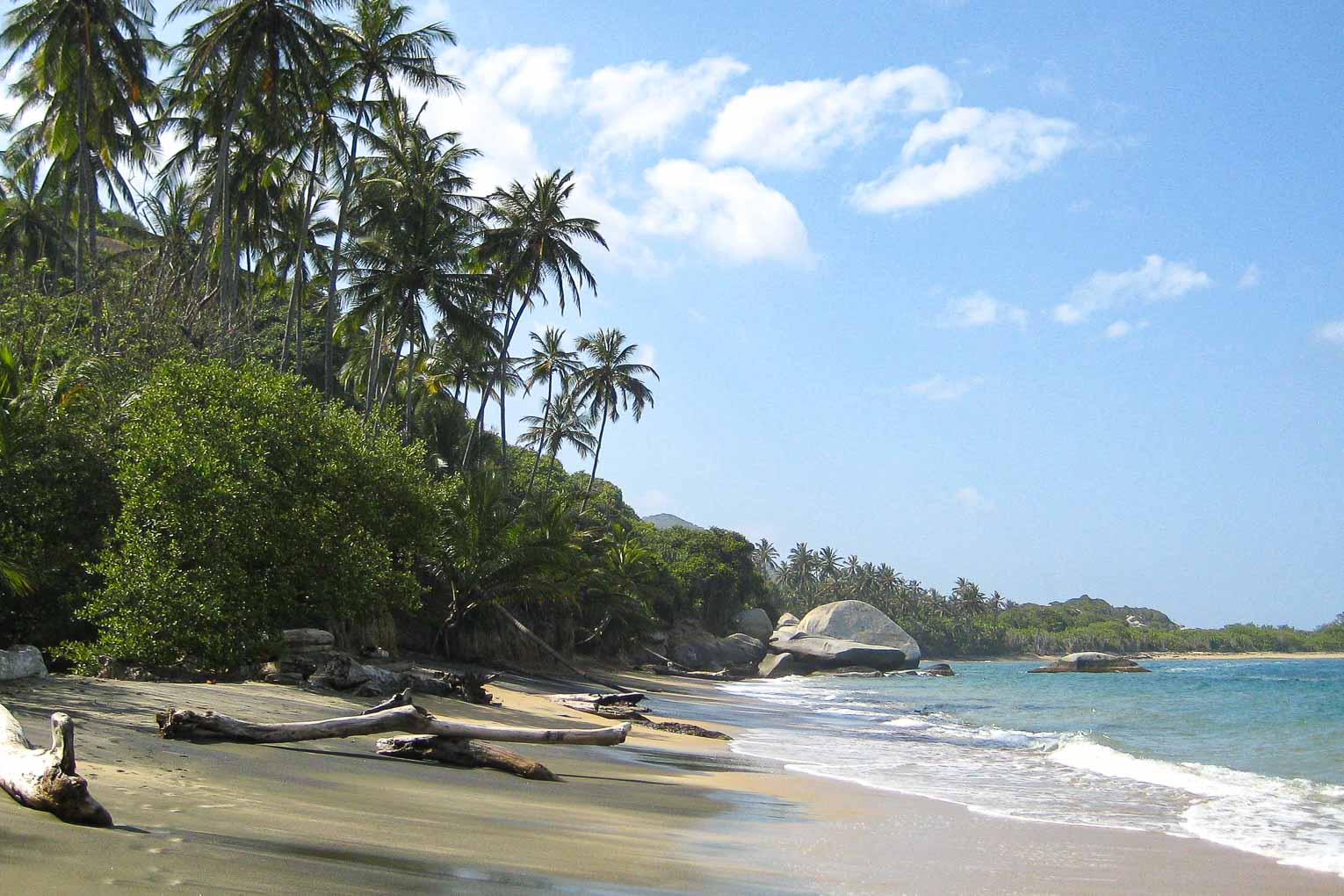
What are the opening hours of Tayrona National Park?
If you’re not sleeping inside the park, you’ll need to be out before closing time.
- El Zaino sector: daily, 7 a.m. to 5 p.m. (last entry: 12 p.m.)
- Calabazosector: daily from 7 a.m. to 3 p.m. (last entry: 11 a.m.)
- Neguanje Sector (Palangana): Daily from 7am to 5pm (last entry: 2pm)
- Bahia Concha sector: daily from 7am to 4pm (last entry: 2pm)
How much does it cost to enter Tayrona Park?
Tickets can be purchased on site at the entrances to each sector. Prices are the same for all sectors except Bahia Concha.
| Admission to Tayrona Park (all areas except Bahia Concha) | High season | Low season |
|---|---|---|
| Foreign tourists | $73.500 COP | $62.000 COP |
| Colombians or residents 25 years | $33.000 COP | $28.000 COP |
| Colombian or resident – 25 years | $23.500 COP | $21.000 COP |
| Insurance (mandatory) | + $5.000 COP | + $5.000 COP |
Bahia Concha area
- Colombians or residents: $18.000 COP ( 25 years) / $10.500 COP (under 25 years)
- Foreigners: $30.000 COP
Your ticket is valid for the duration of your stay in the park.
HIGH SEASON DATES
- From 1/12 to 31/01
- June 1 to July 31
- Holy Week (10 days)
- On Colombian public holiday weekends (Friday to Tuesday)
Tayrona Park map
The different beaches and sectors of Tayrona National Park in detail
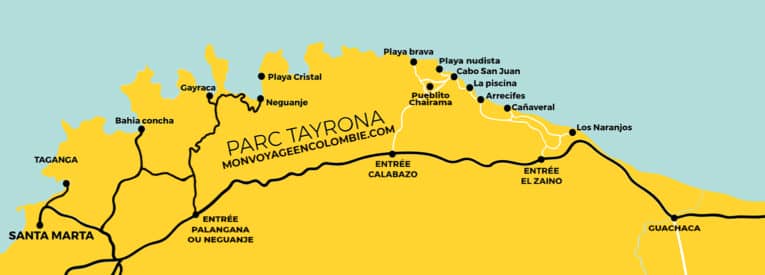
Since early 2019 and at the request of indigenous communities in order to protect sacred sites and allow traditional rituals to be practiced, three beaches in Tayrona Park will henceforth be off-limits to tourists: Chengue, Los Naranjos, and the eastern area of Bahia Concha. Access to Pueblito is also closed to tourists: it is therefore no longer possible to visit it.
PRECISION: The trail from Calabazo to Cabo San Juan and Playa Brava remains open, bypassing the Pueblito site. It is also possible to link Cabo San Juan and Playa Brava.
Zaino / Calabazo sector
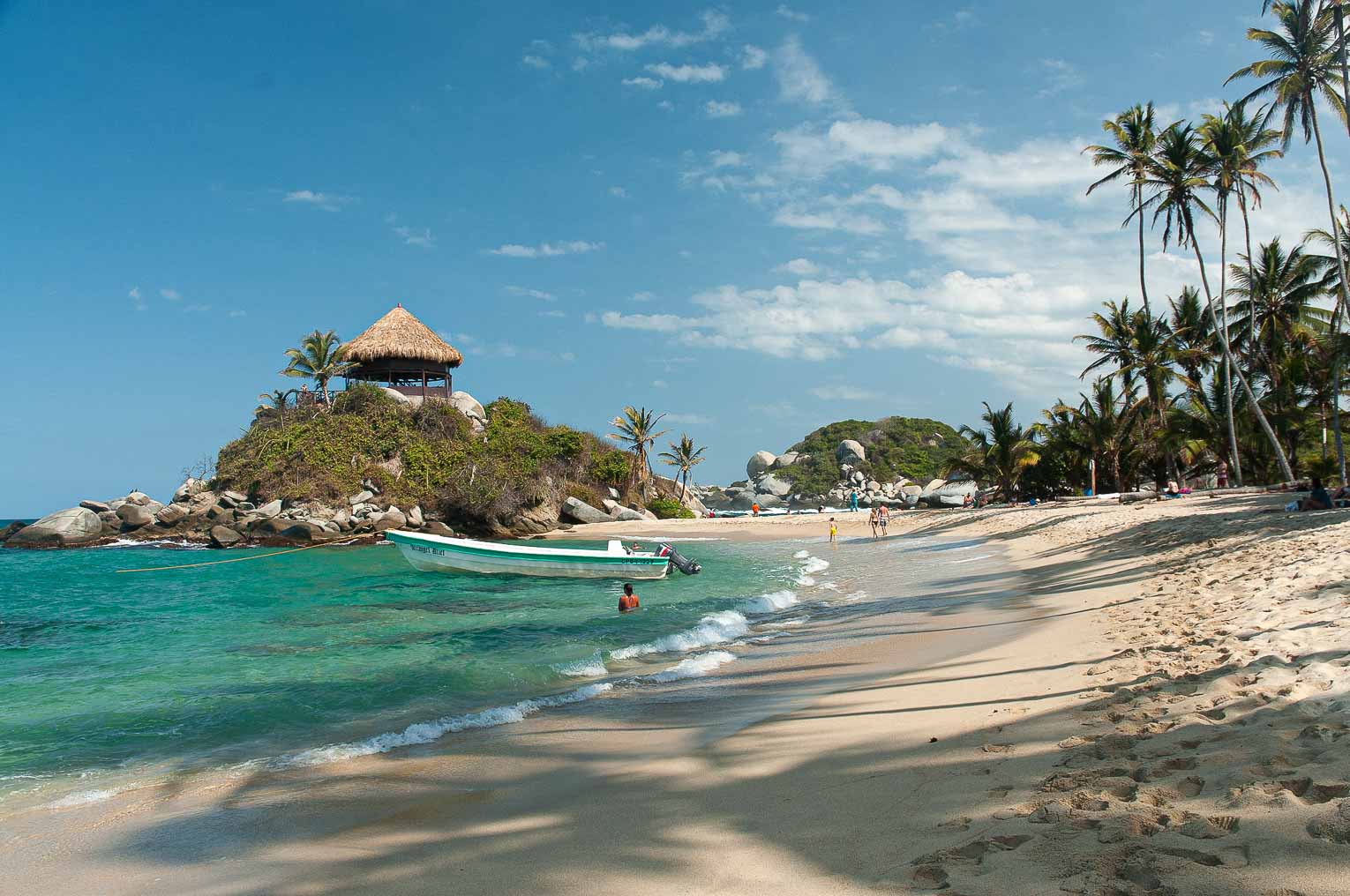
The El Zaino / Calabazo sector is the part of the Tayrona Park most visited by tourists, and is home to Cabo San Juan beach, the best-known beach in the park, if not in Colombia..
The beaches follow each other along the coastal path between Cañaveral and Playa Brava, in the following order:
- Cañaveral (closest to the El Zaino entrance)
- Arrecifes
- Arenilla
- Punta Gaviotas
- La Piscina
- Cabo San Juan
- Playa nudista
- Playa Brava (closest to the Calabazo entrance)
All the beaches are accessible from either the El Zaino or Calabazo entrances, but the distances to each will vary depending on the entrance!
All Tayrona Park beaches
If you’d like to find out more about the beaches in Tayrona Park, how far they are from each other, and see some photos, we suggest you read our dedicated post!
Neguanje (or Palangana) sector

The entrance to Neguanje or Palangana is located at km 5 of the main road between Santa Marta and Riohacha, but the poor condition of the road to the beaches today makes land access difficult.
While it’s still possible to be dropped off by bus at the junction with Neguanje, there are now few options on the spot for continuing along the road, and you’re likely to find yourself very much on your own with no further options.
To get there, it’s now best to take a day trip from Santa Marta or Taganga.
This is a completely separate sector from the traditional Zaino/Calabazo one. Here you’ll find some beautiful, lesser-known beaches:
- Bahia Neguanje
- Gayraca
- Playa Cristal
- Playa Cinto
- Siete Olas
The entrance fee for the Neguanje sector is supposed to be the same as for the Zaino / Calabazo sector.
Bahia Concha sector
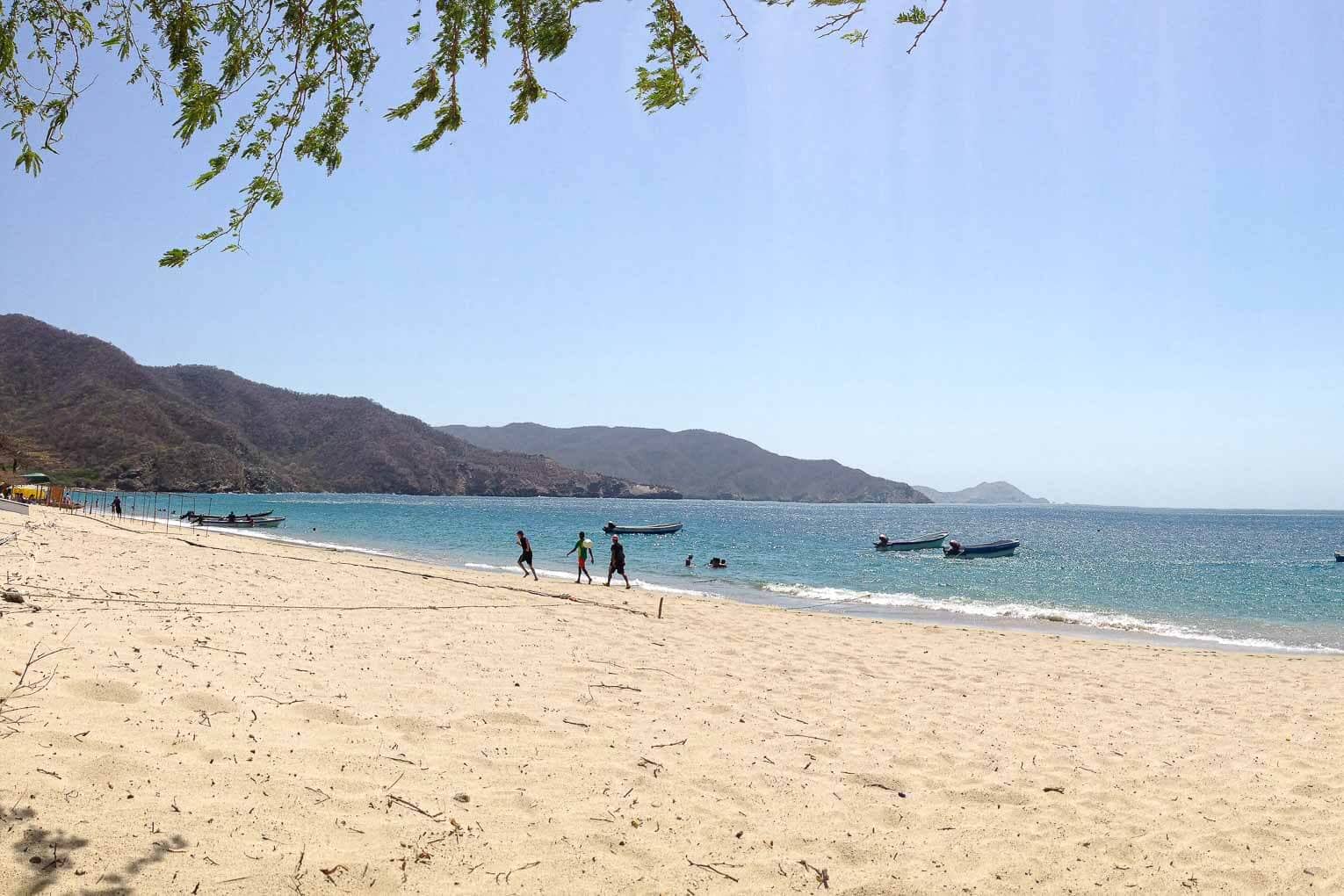
Located on a private estate on the edge of Tayrona National Park, you have to pay an entrance fee to get to the Bahia Concha beach. Last I heard, the rate was $5000 COP. Once there, you can pay for a lancha to go snorkelling on the surrounding beaches.
This is the closest beach to Santa Marta in the park. To get there, take a buseta from “Bastidas” (Avenida 5ta and 14) to the end of the line, then take a motorcycle or cab to the end of the road. Make sure you catch the last bus back at around 5 p.m.
Guide to the park
Practical information Tayrona National Park
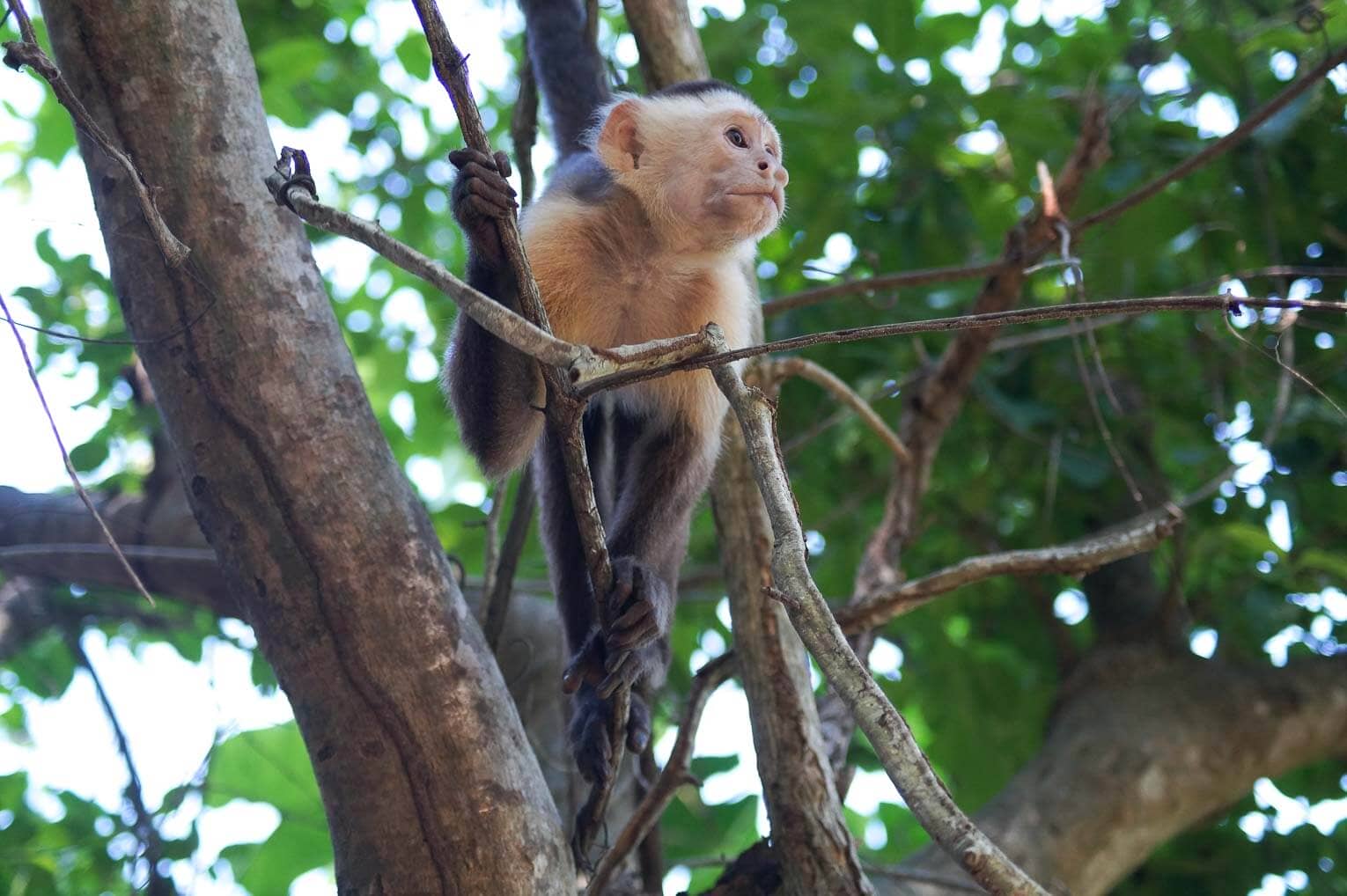
If you would like to be accompanied by a guide to discover Tayrona Park and learn more about its unique ecosystem, flora and fauna, please contact our local partner.
This is your chance to talk to a passionate local guide, and not just walk through Tayrona Park without realizing its ecological, historical and cultural importance!
Contact a local guide
Where to stay in Tayrona Park
Accommodation in Tayrona Park
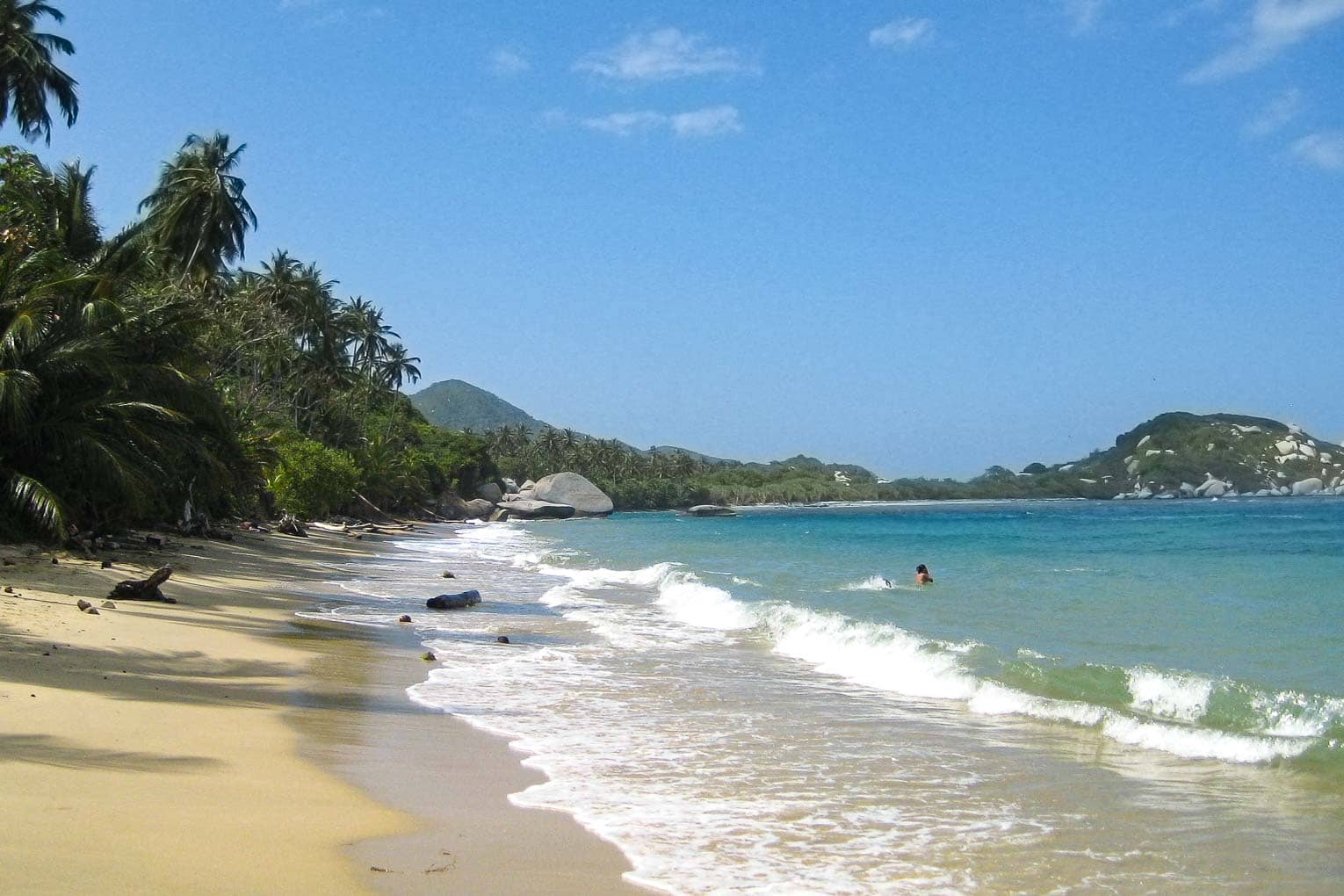
There are two options for accommodation in Tayrona Park:
- Lodging outside the park: if you’re only planning a quick day trip to the park
- Lodging inside the park : if you want to enjoy more and stay at least one night
Inside Tayrona Park, all types of accommodation are available: hammocks in shared shelters, tents with mattresses, small private cabins, luxurious Ecolodges.
HOW TO BOOK ACCOMMODATION IN TAYRONA PARK
Although reservations are generally not required, it’s best to arrive in the park early in the morning, as places fill up quickly, especially at Cabo San Juan. In high season, however, we strongly advise you to book in advance.
Campsites inside Tayrona Park
- Hammock: between $20.000 and $40.000 COP
- Tent: between $30.000 and $40.000 COP
- Cabin: between $150.000 and $200.000 COP
Camping de Castillete
Located on the beach in Cañaveral
Opinion : Readers have told us about robbery in there
Camping Don Pedro
Located in the forest near Arrecifes
Opinion : Reputedly not very welcoming
EcoCamping LUI
Located near Arrecifes beach
Opinion : New campsite
Camping Bermudez
Located near the beach in Arrecifes
Opinion: Not very clean
Camping cabo San Juan
Located on the beach of Cabo San Juan
Opinion: Reputedly overbooked.
General comments
- Generally speaking, rates inside the park are higher than elsewhere.
- We strongly advise you to use the campsite sanitary facilities early in the morning to ensure they are clean.
- Electricity and water are often rationed and limited to certain hours.
- Nearly all campsites offer scheduled meals
- Hammocks are usually placed under a shelter, close to each other, with an individual mosquito net.
Other accommodation in Tayrona Park
Below you’ll find other, more comfortable accommodations for sleeping inside the park. Check the location: some are situated between the Zaino and Cañaveral entrances, another is in Playa Brava, and another is totally isolated between Playa Brava and Playa Cristal.
Inside, Tayrona Park, the best hotels
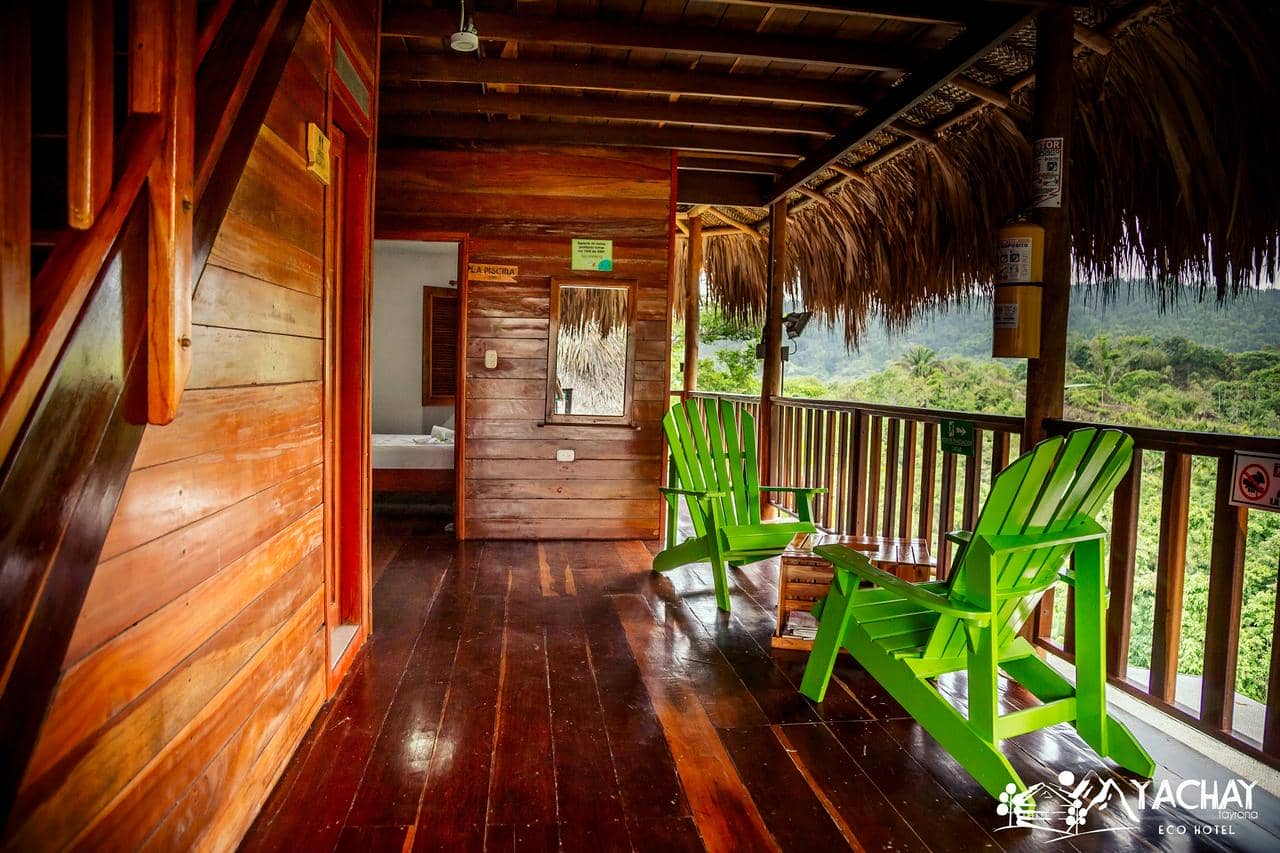
Eco Lodge
Posada Yachay Tayrona
Double room : $200.000 to $250.000 COP
Luxury accommodation in the heart of Tayrona Park. Situated 1km from the El Zaino entrance but on a hill, it offers a sublime view of the surrounding mountains.
Inside, Tayrona Park, the best hotels
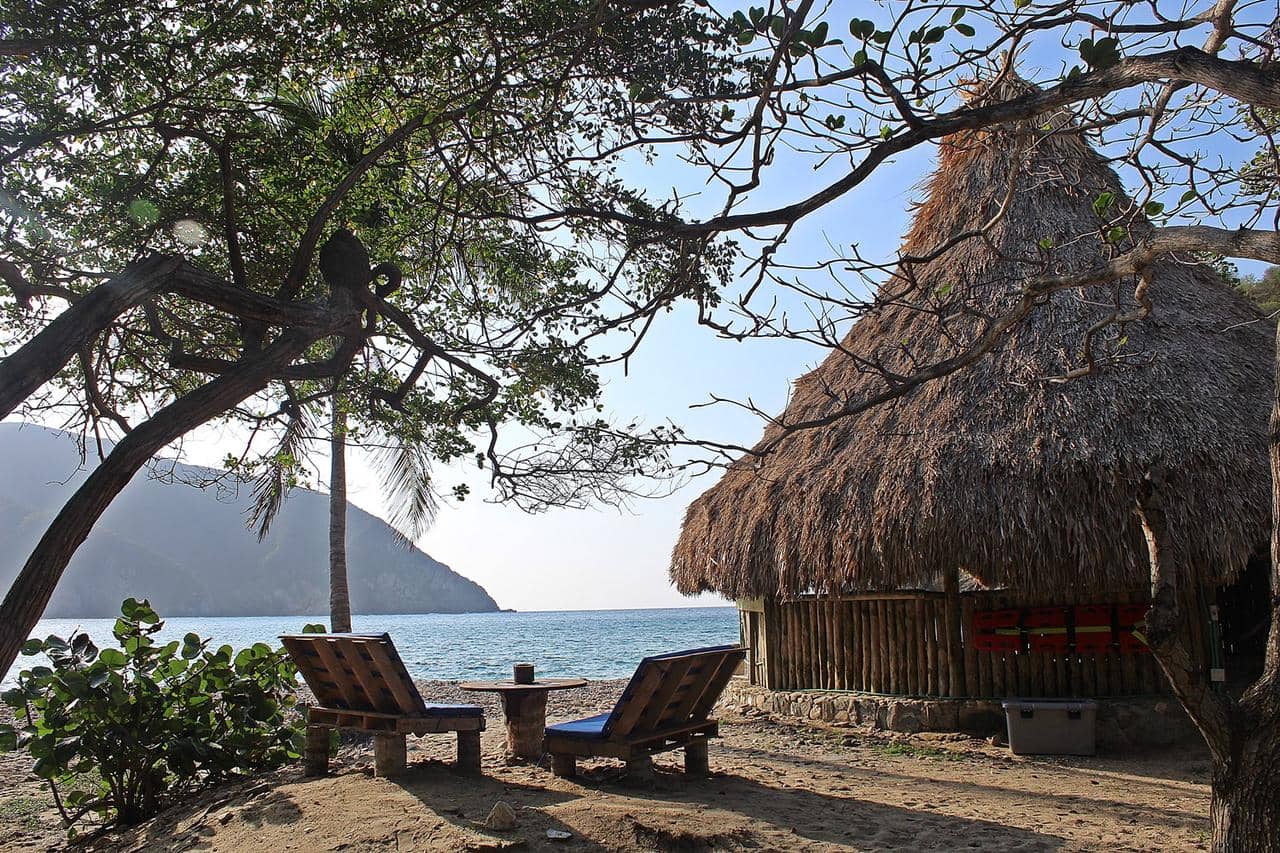
Hostal
Hostal Wachakyta
Dormitory : $50.000 to $100.000/Double room : $250.000 to $300.000 COP
Please note that the hostel is only accessible by boat. Camping and dormitory-style services at rather high prices, due to the idyllic and isolated setting. You can eat on site, of course.
Inside, Tayrona Park, the best hotels
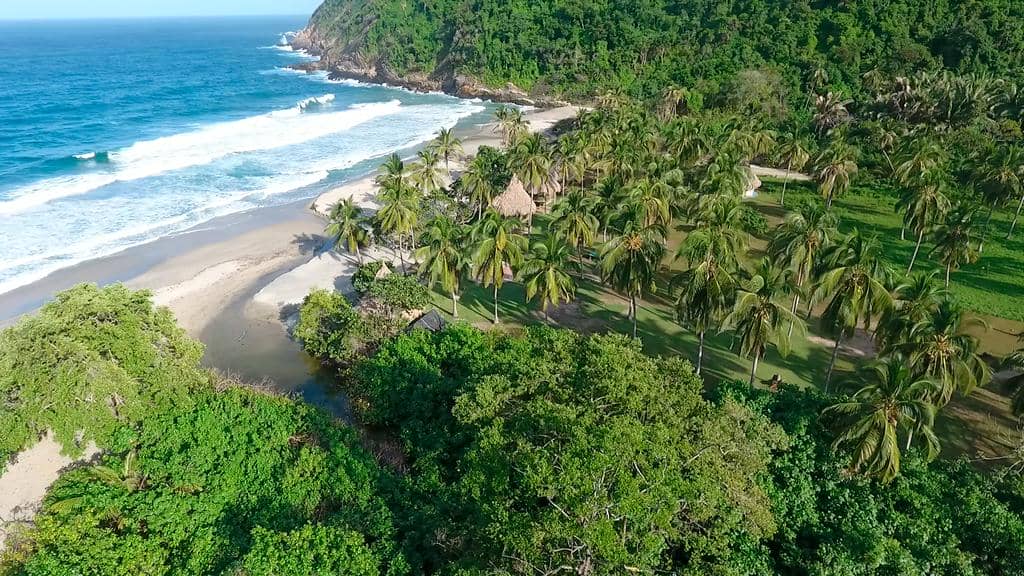
Eco Lodge
Hostal Teyumakke
Double room : $150.000 to $200.000 COP
Hostal Teyumakke is located inside the park, entering from Calabazo, after a fairly demanding 8km hike (it’s also possible to get there on horseback). Rudimentary wooden huts with palm-fringed roofs, right on the beach, but perfect for disconnecting from the world! (No wifi)
Inside, Tayrona Park, the best hotels
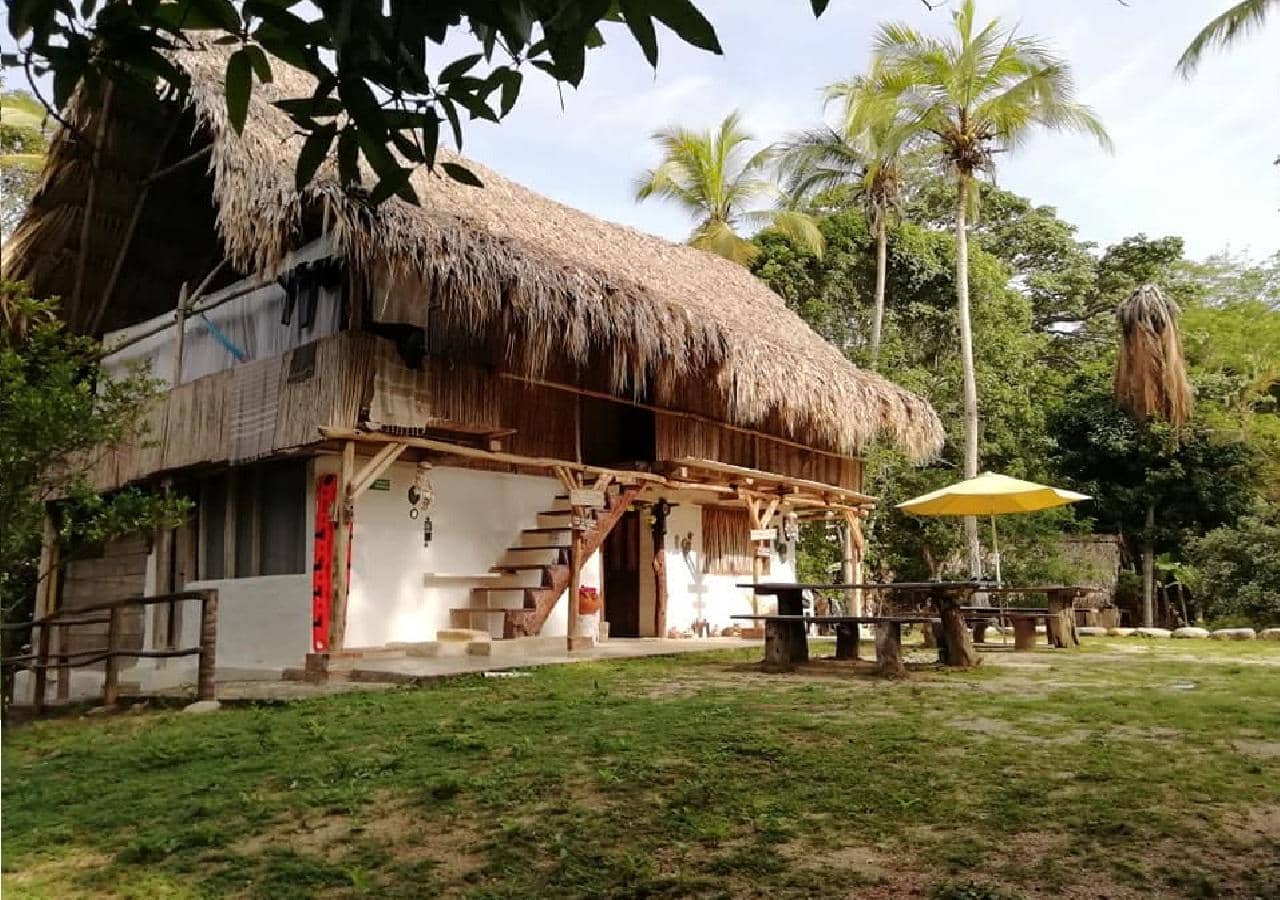
Eco Lodge
Posada Jasayma
Double room : $100.000 to $150.000 COP
One of the few “hard” accommodation options inside Tayrona Park, a 15-minute walk from the El Zaino entrance. The attentive staff provide a haven of peace in the middle of the jungle, including meals with veggie options.
Where to stay outside Tayrona Park
It’s perfectly possible to stay close to Tayrona Park if you only want to spend a day inside.
Close to entrance, Tayrona Park, the best hotels

Hostal
Yuluka Hostel
Dormitory : $25.000 to $50.000/Double room : $150.000 to $200.000 COP
Located around 5 minutes by bus from the main “El Zaino” entrance to Tayrona Park (bus every 15 minutes), Eco hostal Yukula is a green setting with swimming pool, hammocks, dormitories or rooms in lodge-style cabins.
Close to entrance, Tayrona Park, the best hotels

Hostal
Hostal Manigua
Dormitory : $25.000 to $50.000/Double room : $100.000 to $150.000 COP
At the Calabazo entrance, a superb hostal, a little more expensive than the campsite but still relatively accessible. Accommodation ranges from dormitories to lovely double rooms, with a jungle atmosphere and swimming pool.
Close to entrance, Tayrona Park, the best hotels

Camping, Eco Lodge
Playa Los Angeles
Double room : $150.000 to $200.000 COP
A semi-private beach 5 minutes from the entrance to Tayrona Park, offering ecolodges and glamping tents on the beach… Recommended.
How to get to Tayrona Park
Transportation to Tayrona Park
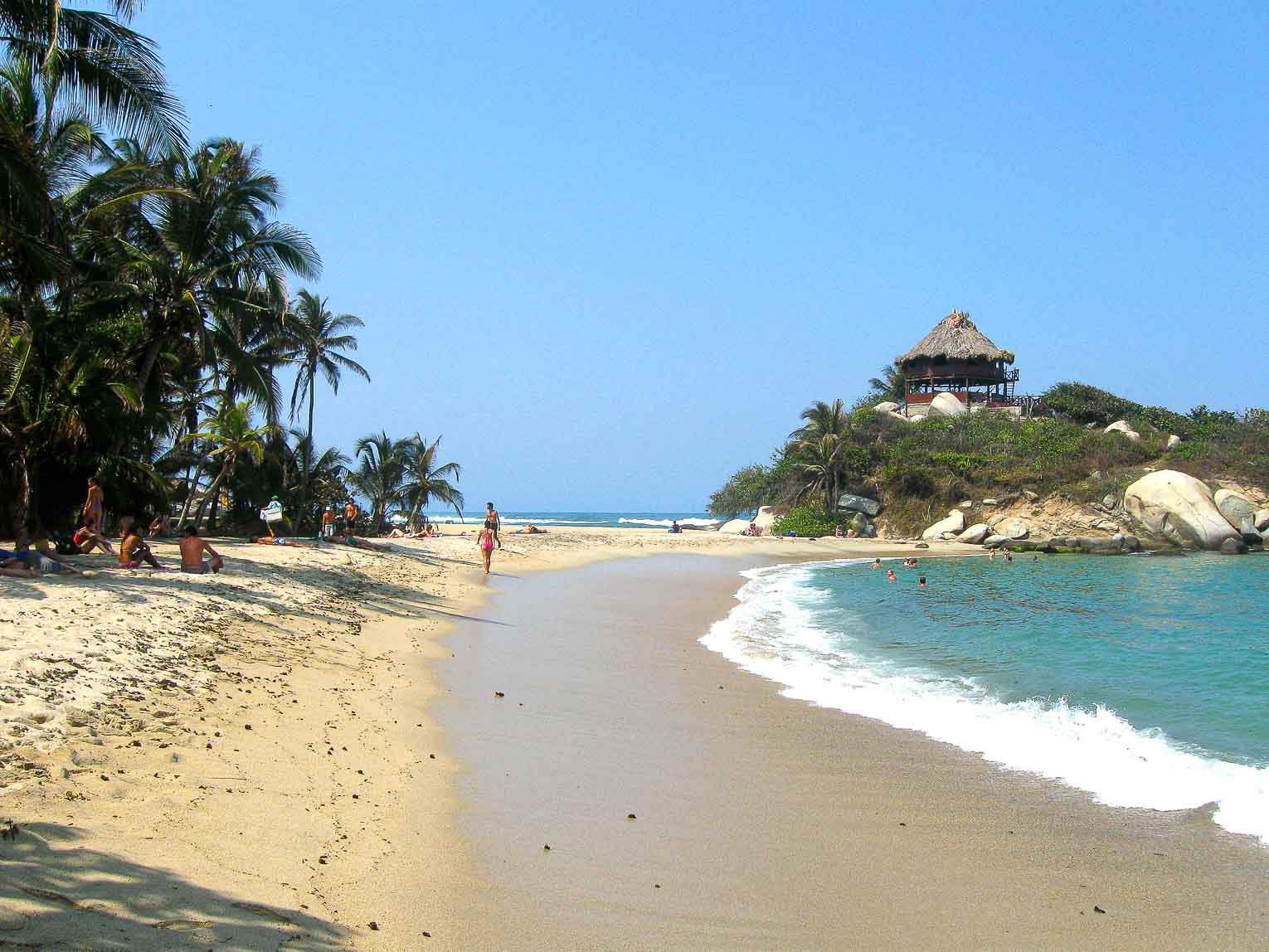
Getting to Tayrona National Park from Santa Marta
- Go to the bus terminal or Mercado Publico (Carrera #11 and Calle #9)
- Take a bus “direction Palomino or Riohacha”
- Ask the driver for the “Tayrona” or “El Zaino” or “Entrada Principal” stop.
Bus from Santa Marta to Tayrona (Zaino entrance)
- Price: approx. $8.000 COP
- Duration: 1 hour
- Frequent departures throughout the day (please note that there are certain times to enter the park, after which it is no longer possible to enter)
Cab option
- Price: $120.000 COP
- Duration: 1 hour
Getting to Tayrona National Park from Riohacha or Palomino
Bus from Palomino to Tayrona (Zaino entrance)
Take the first bus on the main road, ask the driver for a stop.
- Price: approx. $7.000 COP
- Duration: 1 hour
- Frequent service all day until 6:30 p.m
Bus from Riohacha to Tayrona (Zaino entrance)
Meet at the bus terminal to take a bus to Santa Marta, ask the driver for the stop.
- Price: approx. $15.000 COP
- Duration: 2 hours
- Frequent service all day until 6:30 p.m
Sea transport to Tayrona National Park
Tayrona Park can be reached by sea from Santa Marta or Taganga.
Lancha from Taganga to Cabo San Juan
- Price: $50.000 COP one way.
- Duration: 1 hour
- Departure around 9 a.m., return around 4 p.m
Lancha from Taganga to Playa Cristal (Neguanje sector – daily plan)
- Price: $80.000 COP round trip mandatory
- Duration: 45 minutes
- Departures around 9 a.m. and return around 4 p.m
INFO AND SAFETY ON THE LANCHA
Check that the entrance fee for the Tayrona Park sector you are visiting is included in the price of the trip.
Please note that this trip from Taganga is not recommended during periods of heavy swell, particularly in January, February and March, when the sea can be extremely rough. We recommend that you do not make the trip by lancha during these periods, as safety conditions are not met.
We also advise you toavoid using informal guides to get to Tayrona Park, as many tourists have been scammed or misled by fake guides who don’t know the park well.
F.A.Q – Frequently asked questions
Rare information about Tayrona Park

Nearly all accommodations within Tayrona National Park offer a restaurant, but beware of the timetable! Because if you miss the service, you could find yourself in trouble..
Prices : you’ll need to budget between $15.000 COP and $30.000 COP for food that’s more or less good, depending on your tastes. Again, bear in mind that everything is more expensive inside the park.
- It is forbidden to bring in drugs and alcohol.
- It is forbidden to bring in single-use plastics (straws, cutlery, meal trays, boxes and drink stirring sticks)
- All garbage must be brought back with you
For your information, military personnel are frequently present at the park entrance to search bags.
Tayrona National Park is divided into 3 independent sectors:
- El Zaino / Calabazo sector
- Neguanje (or Palangana) sector
- Bahia Concha sector
Independent means that there are no paths or roads linking one sector to the other. The only way to link these sectors without exiting via the main road is by sea.
Once you’ve entered Tayrona Park, you can’t get from one area to another by land. The only possible connections are by sea. It is possible to connect the Neguanje sector and the El Zaino / Calabazo sector via lanchas that travel back and forth between Cabo San Juan and Playa Cristal.
A yellow fever vaccination is only recommended, but you won’t be asked for one on entering the park.
You can drive your car or motorcycle into the park. You’ll have to pay for the car’s entrance and for parking.
- Entry fee per vehicle: Car = $13.500 COP / Motorcycle = $9.500 COP
- Parking fee: $6.000 COP per day
Yes, you can leave your bag at the El Zaino and Calabazo entrances.
- Price: around $5.000 COP
The price is the same for El Zaino, Calabazo and Neguanje.
For Bahia Concha, as mentioned below, we’re at the park’s boundary and there’s no entrance fee to Tayrona Park. (Only a beach access fee)
As of 24/01/2020, it is no longer possible to book tickets in advance. During peak season, the park is very busy and may be fully booked. There is a maximum quota of entries authorized per day. In high season, you should therefore try toarrive as early as possible to buy your ticket.
High season
- From 1/12 to 31/01
- From 1/06 to 31/07
- Holy Week (10 days)
- During Colombian holiday weekends (Friday to Tuesday)
From the El Zaino entrance, it is possible to take a shuttle bus that brings visitors closer to the start of the coastal path at Cañaveral (this saves an extra 1h/1h30 of walking)
- Shuttle fare: $3.000 COP
No, but there are regular buses on the road. You just have to raise your arm for them to stop, and then ask the driver to leave you at the other entrance.
Insurance is now compulsory in all national parks, and the rate is per person per day (according to our information, your travel insurance will not be accepted).
- Insurance fee: $5.000 COP
Your ticket is valid for the duration of your stay in the park, as long as you don’t leave.
No, all exits are final and you’ll have to pay again if you wish to return to the park.
No, the only two beaches served by lanchas are “Playa Cristal” in the Neguanje sector (Palangana) and “Cabo San Juan” in the El Zaino/Calabazo sector. These beaches are served on a round-trip basis from Santa Marta or Taganga (morning departure/mid-afternoon return)
We give you all the information you need in our post on the beaches of Tayrona Park.

